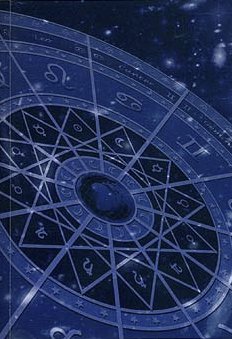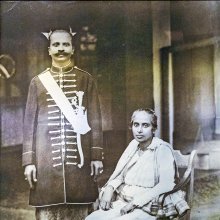Tanaya: 20 definitions
Introduction:
Tanaya means something in Hinduism, Sanskrit, Buddhism, Pali, Marathi, Jainism, Prakrit, Hindi. If you want to know the exact meaning, history, etymology or English translation of this term then check out the descriptions on this page. Add your comment or reference to a book if you want to contribute to this summary article.
Alternative spellings of this word include Tanay.
Images (photo gallery)
In Hinduism
Purana and Itihasa (epic history)
Source: Wisdom Library: Bhagavata PuranaTanaya (तनय):—One of the four sons of Kuśa (son of Ajaka). (see Bhāgavata Purāṇa 9.15.4)
Source: archive.org: Puranic EncyclopediaTanaya (तनय).—A place of habitation of ancient Bhārata. Śloka 64, Chapter 9, Bhīṣma Parva).
Source: archive.org: Shiva Purana - English TranslationTanayā (तनया) refers to “daughters” (i.e., the three daughters of Svadhā), according to the Śivapurāṇa 2.3.2.—Accordingly, as Sanatkumāra said to the three daughters of Svadhā (i.e., Menā, Dhanyā, Kalāvatī) after cursing them:—“[...] O ye three daughters of forefathers (i.e., tanayā—pitṝṇāṃ tanayāstisraḥ), listen with pleasure to my words that will dispel your sorrow and bestow happiness (i.e., sukhada) on you. Without adversity how can one attain greatness? To persons of good rites, if misery vanishes happiness is likely to be difficult of access. Ye the daughters of forefathers shall shine in heaven. By the vision of Viṣṇu your evil actions have been quelled”.

The Purana (पुराण, purāṇas) refers to Sanskrit literature preserving ancient India’s vast cultural history, including historical legends, religious ceremonies, various arts and sciences. The eighteen mahapuranas total over 400,000 shlokas (metrical couplets) and date to at least several centuries BCE.
Jyotisha (astronomy and astrology)
Source: Wisdom Library: Brihat Samhita by VarahamihiraTanaya (तनय) refers to the “offspring”, according to the Bṛhatsaṃhitā (chapter 11), an encyclopedic Sanskrit work written by Varāhamihira mainly focusing on the science of ancient Indian astronomy astronomy (Jyotiṣa).—Accordingly, “The Ketus or comets whose tails are bent and which are of sharp rays and black are the sons of Yama ; they are 25 in number; they appear in the south; when they appear there will be deaths in the land. The Ketus or comets that appear like a mirror, are round in shape without tails but with rays and looking like oil or water are the sons of the Earth [i.e., dharā-tanaya]; they are 23 in number, and appear in the north-east; when they appear mankind will be afflicted with fear and hunger”.

Jyotisha (ज्योतिष, jyotiṣa or jyotish) refers to ‘astronomy’ or “Vedic astrology” and represents the fifth of the six Vedangas (additional sciences to be studied along with the Vedas). Jyotisha concerns itself with the study and prediction of the movements of celestial bodies, in order to calculate the auspicious time for rituals and ceremonies.
Languages of India and abroad
Pali-English dictionary
Source: BuddhaSasana: Concise Pali-English Dictionarytanaya : (m.) a son; offspring. || tanuyā (f.) a daughter.
Source: Sutta: The Pali Text Society's Pali-English DictionaryTanaya, & tanuya (at S. I, 7, v. l. tanaya, cp. BSk. tanuja AvŚ II. 200) offspring, son Mhvs VII. 28. pl. tanuyā (=Sk. tanayau) son & daughter S. I, 7. (Page 296)

Pali is the language of the Tipiṭaka, which is the sacred canon of Theravāda Buddhism and contains much of the Buddha’s speech. Closeley related to Sanskrit, both languages are used interchangeably between religions.
Marathi-English dictionary
Source: DDSA: The Molesworth Marathi and English Dictionarytanaya (तनय).—m S A son. tanayā f S A daughter.
--- OR ---
tanāya (तनाय).—f ( A) A tent-rope; a washerman's line; any stretched line to hang clothes &c., or as a stay (as to a flag-staff, idolpole, or other erected pole, to an awning, a maṇḍapa &c.) 2 fig. A patron or supporter, an upholding cord. tanayā pl tuṭaṇēṃ Used of the laborious straining of singers, rehearsers of the Vedas &c., and, ironically, of the screaming of bad singers. 2 also tanāī or ya sing with g. of s. To lose one's patron or supporter.
Source: DDSA: The Aryabhusan school dictionary, Marathi-Englishtanaya (तनय).—m A son. tanayā f A daughter.
Marathi is an Indo-European language having over 70 million native speakers people in (predominantly) Maharashtra India. Marathi, like many other Indo-Aryan languages, evolved from early forms of Prakrit, which itself is a subset of Sanskrit, one of the most ancient languages of the world.
Sanskrit dictionary
Source: DDSA: The practical Sanskrit-English dictionaryTanaya (तनय).—[tanoti kulaṃ, tan-kayan]
1) A son; Manusmṛti 3.16; सुदक्षिणायां तनयं ययाचे (sudakṣiṇāyāṃ tanayaṃ yayāce) R.2.64.
2) A male descendant.
3) (In astrol.) Name of the fifth lunar mansion.
-yā A daughter; Manusmṛti 11.171. °भवनम् (bhavanam) The 5th lunar mansion; Bṛ S.14.27. गिरि°, कलिन्द° (giri°, kalinda°) &c.
-yau (dual) A son and a daughter.
-yam Posterity, family, offspring.
-tanayīkṛta a. made a son; मातामहस्य यो मात्रा दौहित्रस्तनयी- कृतः (mātāmahasya yo mātrā dauhitrastanayī- kṛtaḥ) Rāj. T.4.8.
Derivable forms: tanayaḥ (तनयः).
Source: Cologne Digital Sanskrit Dictionaries: Shabda-Sagara Sanskrit-English DictionaryTanaya (तनय).—m.
(-yaḥ) 1. A son. 2. A male descendant. f.
(-yā) 1. A daughter. 2. A plant: see cakrakulyā. E. tan to spread, (to extend the family or name,) kayan Unadi aff. tanoti kulam .
Source: Cologne Digital Sanskrit Dictionaries: Benfey Sanskrit-English DictionaryTanaya (तनय).— (vb. 1. tan, anomal. [Causal.] + a), I. adj. Continuing a family,
Tanaya (तनय).—[adjective] propagating a race or belonging to a family. [masculine] son ([dual] also son and daughter); [feminine] tanayā daughter; [neuter] posterity, offspring, child, descendant.
Source: Cologne Digital Sanskrit Dictionaries: Monier-Williams Sanskrit-English Dictionary1) Tanaya (तनय):—[from tan] mfn. propagating a family, belonging to one’s own family (often said of toka), [Ṛg-veda; Aitareya-brāhmaṇa ii, 7]
2) [v.s. ...] m. a son, [Manu-smṛti iii, 16; viii, 275; Mahābhārata] ([dual number] ‘son and daughter’, [iii, 2565]), [Śakuntalā; Raghuvaṃśa ii, 64]
3) [v.s. ...] = -bhavana, [Varāha-mihira’s Bṛhat-saṃhitā]
4) [v.s. ...] Name of a Vāsiṣṭha, [Harivaṃśa 477] ([varia lectio] anagha)
5) [v.s. ...] [plural] Name of a people, [Mahābhārata vi, 371]
6) [v.s. ...] n. posterity, family, race, offspring, child (‘grandchild’, opposed to toka, ‘child’ [Nirukta, by Yāska x, 7; xii, 6]), [Ṛg-veda; Varāha-mihira’s Bṛhat-saṃhitā] (ifc. f(ā). , [ciii, 1 f.])
7) Tanayā (तनया):—[from tanaya > tan] f. ([gana] priyādi) a daughter, [Manu-smṛti xi, 172] ([varia lectio]), [Nalopākhyāna; Rāmāyaṇa] etc.
8) [v.s. ...] the plant cakra-tulyā, [cf. Lexicographers, esp. such as amarasiṃha, halāyudha, hemacandra, etc.]
Source: Cologne Digital Sanskrit Dictionaries: Yates Sanskrit-English DictionaryTanaya (तनय):—(yaḥ) 1. m. A son. f. (yā) A daughter; a plant.
Source: DDSA: Paia-sadda-mahannavo; a comprehensive Prakrit Hindi dictionary (S)Tanaya (तनय) in the Sanskrit language is related to the Prakrit words: Taṇaya, Taṇayā.
[Sanskrit to German]
Sanskrit, also spelled संस्कृतम् (saṃskṛtam), is an ancient language of India commonly seen as the grandmother of the Indo-European language family (even English!). Closely allied with Prakrit and Pali, Sanskrit is more exhaustive in both grammar and terms and has the most extensive collection of literature in the world, greatly surpassing its sister-languages Greek and Latin.
Hindi dictionary
Source: DDSA: A practical Hindi-English dictionaryTanaya (तनय) [Also spelled tanay]:—(nm) a son; hence ~[yā] (nf) a daughter.
...
Prakrit-English dictionary
Source: DDSA: Paia-sadda-mahannavo; a comprehensive Prakrit Hindi dictionary1) Taṇaya (तणय) in the Prakrit language is related to the Sanskrit word: Tanaya.
2) Taṇayā (तणया) also relates to the Sanskrit word: Tanayā.
Prakrit is an ancient language closely associated with both Pali and Sanskrit. Jain literature is often composed in this language or sub-dialects, such as the Agamas and their commentaries which are written in Ardhamagadhi and Maharashtri Prakrit. The earliest extant texts can be dated to as early as the 4th century BCE although core portions might be older.
Kannada-English dictionary
Source: Alar: Kannada-English corpusṬāṇaya (ಟಾಣಯ):—
1) [noun] = ಟಾಣ - [tana -] 1.
2) [noun] a contingent of policemen, armed force, etc. guarding a place.
3) [noun] a place where tents, huts, barracks or other more or less temporary structures have been put up for soldiers.
--- OR ---
Tanaya (ತನಯ):—[noun] a boy or man as related to either or both patents; a son.
Kannada is a Dravidian language (as opposed to the Indo-European language family) mainly spoken in the southwestern region of India.
See also (Relevant definitions)
Starts with: Tanaya-prapta, Tanayabhavana, Tanayal, Tanayama, Tanayan, Tanayasaras, Tanayasthana.
Ends with (+92): Abdhitanaya, Acalatanaya, Achalatanaya, Adhitanaya, Adritanaya, Agnitanaya, Amoghatanaya, Anilatanaya, Arkatanaya, Auttanaya, Bahutanaya, Balatanaya, Bandhyatanaya, Bhogindratanaya, Bhrigutanaya, Bhumitanaya, Candratanaya, Chandratanaya, Chayatanaya, Chhayatanaya.
Full-text (+438): Adritanaya, Suryatanaya, Tapanatanaya, Dugdhabdhitanaya, Chayatanaya, Kshirabdhitanaya, Kshirodatanaya, Balatanaya, Nandinitanaya, Shambhutanaya, Dugdhabdhi, Janakatanaya, Radhatanaya, Tanayabhavana, Taranitanaya, Kalindatanaya, Rajatanaya, Surabhitanaya, Jahnutanaya, Kshititanaya.
Relevant text
Search found 23 books and stories containing Tanaya, Tanāya, Tanayā, Taṇaya, Taṇayā, Ṭāṇaya; (plurals include: Tanayas, Tanāyas, Tanayās, Taṇayas, Taṇayās, Ṭāṇayas). You can also click to the full overview containing English textual excerpts. Below are direct links for the most relevant articles:
Rig Veda (translation and commentary) (by H. H. Wilson)
Garga Samhita (English) (by Danavir Goswami)
Verse 5.19.27 < [Chapter 19 - The Festival on Śrī Kṛṣṇa Return]
Verse 6.2.14 < [Chapter 2 - Residence in Śrī Dvārakā]
Manusmriti with the Commentary of Medhatithi (by Ganganatha Jha)
Verse 8.275 < [Section XLI - Verbal Assault (Abuse and Defamation)]
Verse 11.171 < [Section XIX - Expiation for Wrongful Sexual Intercourse]
Bhajana-Rahasya (by Srila Bhaktivinoda Thakura Mahasaya)
Text 10 < [Chapter 7 - Saptama-yāma-sādhana (Pradoṣa-kālīya-bhajana–vipralambha-prema)]
Text 19 < [Chapter 7 - Saptama-yāma-sādhana (Pradoṣa-kālīya-bhajana–vipralambha-prema)]
Brihad Bhagavatamrita (commentary) (by Śrī Śrīmad Bhaktivedānta Nārāyana Gosvāmī Mahārāja)
Verse 1.6.15 < [Chapter 6 - Priyatama (the most beloved devotees)]
Verse 2.4.7 < [Chapter 4 - Vaikuṇṭha (the spiritual world)]
Verse 2.1.26 < [Chapter 1 - Vairāgya (renunciation)]
Bhakti-rasamrta-sindhu (by Śrīla Rūpa Gosvāmī)
Verse 3.4.26 < [Part 4 - Parenthood (vātsalya-rasa)]
Verse 3.4.70 < [Part 4 - Parenthood (vātsalya-rasa)]
Verse 2.3.46 < [Part 3 - Involuntary Ecstatic Expressions (sattvika-bhāva)]
